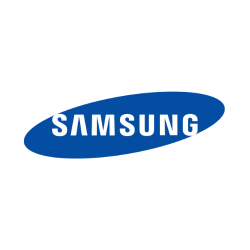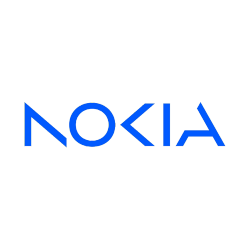
Overview of Lenovo Q350
The Lenovo Q350 is a feature phone that was announced in October 2011. Despite being discontinued, it remains a noteworthy device for those interested in the evolution of mobile phones. It was designed to offer basic functionality with a few smart features, making it ideal for users who required straightforward communication capabilities without the complexity of a smartphone.
Design and Build
With dimensions of 110 x 59 x 12.5 mm and a weight of 100 grams, the Lenovo Q350 is a compact and lightweight device. Its physical QWERTY keyboard makes typing more intuitive for users familiar with traditional keyboards. The device supports dual SIM capability with dual stand-by, which was a popular feature at the time, enabling users to manage two different phone numbers from a single handset.
Display Features
The device sports a 2.3-inch TFT display with a resolution of 320 x 240 pixels. The screen-to-body ratio is approximately 25.2%, and the pixel density is around 174 ppi, delivering basic clarity suitable for text and simple graphics. The display supports 65K colors, which was common for feature phones of that era.
Performance and Hardware
Under the hood, the Lenovo Q350 is powered by a Mediatek MT6235 chipset, ensuring reliable performance for day-to-day tasks. It offers 63MB of internal storage, expandable via a dedicated microSDHC slot. The phone can store up to 1000 contacts in its phonebook, which suits users who need to store multiple contacts. The call records feature aids in maintaining a log of call history.
Camera Specifications
Equipped with a 3.15 MP main camera, the Lenovo Q350 can capture basic photographs and videos. While not designed for high-quality photography, the camera is sufficient for casual snapshots. However, the device lacks a selfie camera, which was a standard omission in feature phones at the time.
Sound and Connectivity
The phone includes a loudspeaker and a 3.5mm audio jack, allowing users to enjoy music and radio via the built-in FM radio feature. Connectivity options include Bluetooth 2.0 with A2DP support, ensuring compatibility with wireless headphones and other Bluetooth devices. The device is also capable of connecting to Wi-Fi networks, though it lacks advanced data positioning features such as GPS.
Software and Features
As a feature phone, the Lenovo Q350 runs a basic operating system aimed at providing essential features like SMS, MMS, and email. It also supports Java-based applications and games, extending its utility beyond voice calls and text messages. Limited by its hardware and software, the phone prioritizes efficiency over versatility.
Battery Life
The Lenovo Q350 is powered by a removable Li-Ion 1100 mAh battery. It offers a standby time of up to 350 hours and a talk time of up to 4 hours, which was quite acceptable for feature phones of that period. The removable battery also allows for easy replacement, further adding to the device's longevity.
Miscellaneous
Available in red color, the Lenovo Q350 retailed at approximately 60 EUR during its launch. Its affordable price point made it an attractive option for budget-conscious consumers. Despite its discontinuation, it provides a glimpse into the past of mobile technology before the ubiquity of smartphones.
Network Capabilities
The Lenovo Q350 operates on GSM technology, supporting GSM 900, 1800, and 1900 MHz bands for both SIM slots. The inclusion of GPRS and EDGE technologies allows for basic mobile internet connectivity, though it is limited in speed and functionality compared to current standards.
Conclusion
The Lenovo Q350 represents a class of mobile devices that bridged the gap between basic cell phones and the more advanced smartphones that dominate today’s market. Its feature set is modest by today’s standards, yet it effectively served the communication needs of users at the time. The device highlights Lenovo's ability to cater to different market segments, providing an affordable and reliable option for those prioritizing communication over advanced functionality.
Key Features of Lenovo Q350
- Dual SIM (Mini-SIM, dual stand-by) functionality for using two SIM cards.
- Compact and lightweight design with dimensions 110 x 59 x 12.5 mm and a weight of 100 g.
- QWERTY keyboard for easy typing and messaging.
- TFT display with 65K colors, 2.3-inch size, and 320 x 240 pixel resolution at ~174 ppi density.
- 3.15 MP main camera capable of capturing photos and videos.
- Expandable memory via microSDHC card slot and internal memory of 63MB.
- Wi-Fi 802.11 b/g and Bluetooth 2.0 with A2DP for connectivity.
- FM radio with recording capability.
- Removable Li-Ion 1100 mAh battery with up to 350 hours standby time.
- Affordable price around 60 EUR.
Disadvantages of Lenovo Q350
- Outdated Technology: The device only supports GSM network technology.
- Discontinued Model: The Lenovo Q350 has been discontinued since its release in October 2011.
- Low Resolution Display: The 2.3-inch TFT display with 320 x 240 pixels resolution offers poor viewing quality.
- Limited Internal Storage: The internal storage is only 63MB, requiring reliance on a microSDHC card for expansion.
- Basic Camera Quality: The main camera is only 3.15 MP, leading to subpar photo and video quality.
- Lacks Front Camera: The device does not feature a selfie camera.
- No GPS Support: The phone lacks positioning capabilities.
- Limited Battery Life: With a 1100 mAh battery, talk time is limited to up to 4 hours.
- Old Bluetooth Version: Comes with Bluetooth 2.0, which supports fewer features compared to newer versions.
- No Advanced Sensors: The device is devoid of modern sensors that are standard in current smartphones.

View Also
More Phones
All Rights Reserved +14038 Phones © Mobilawy 2025

























